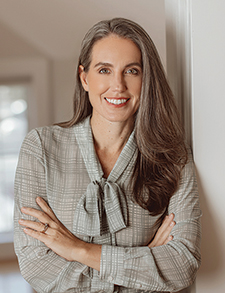 At the end of a busy post-holiday clinic, I walked into an exam room to see a follow-up functional nasal patient. The confident 17-year-old sat in the room with her mom beaming, holding an envelope for me.
At the end of a busy post-holiday clinic, I walked into an exam room to see a follow-up functional nasal patient. The confident 17-year-old sat in the room with her mom beaming, holding an envelope for me.
Explore This Issue
March 2025We first met when she was around 13 years old when she was referred for a severe septal deviation that was causing nasal obstruction and contributing to poor sleep and exercise intolerance. I still remember meeting her and her mom for the first time. She sat shy, quiet, and hunched over in the exam chair with her hair covering much of her face. Her mom encouraged her to speak up and tell me what was bothering her with her nose. She gradually discussed her difficulty with breathing and sleep. She also quietly noted that she got teased about her nose because the front part of her septum was so far over into one nostril that the septum was visible.
We decided to proceed with a closed functional septorhinoplasty to straighten the septum and correct the nasal valves, with a swinging door to correct the severe caudal septal deviation. We discussed the risks of reoccurrence in her age group, but she and her mom decided to proceed with surgery at that time because of the severity of her symptoms. She did well initially, but within a year did have a reoccurrence of her deviation and her symptoms as she grew several more inches. She was better than before surgery but still had symptoms. She and her mom wanted to go back to surgery right away, but I encouraged them to wait until she was done with her rapid teen growth to try to prevent another reoccurrence. They agreed and followed up every six months until we decided together that it was a good time to proceed.
When she was 16 years old, we returned to the operating room for a revision swinging door and correction of the external nasal valve narrowing. This time the septum stayed in the midline.
This year, a now confident 17-year-old female sat in the same exam chair for her follow-up visit, with her hair pulled back and face clearly visible and with a smile that she could not hold back. When I asked her how she was doing, she quickly spoke up and said she was doing great, and they had just made the trip in to give me a card that she had found while they were visiting the Isabella Steward Gardner Museum. The card was a painting of a poised young woman in profile, by Swedish artist Anders Zorn, who looked remarkably like my patient. On the back, she wrote about her gratitude for the surgery. She made my day.
This is a surgery many of us perform daily; it’s just a regular part of our routine. In the hustle and bustle of the day-to-day, it’s easy to forget the positive impact that even the most common procedure can have on an individual patient.
I share this story not to boast about a good result, but for all of us to pause to acknowledge the positive impact we can have on our patients. We’re in a privileged profession where we get to see the direct benefits of the care we provide. With the pressures of medical documentation, declining reimbursements, insurance approvals, and online reviews, it’s easy to forget to pause, reflect, and acknowledge the positive effect we have.
—Robin